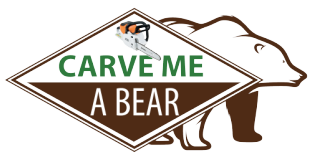The Easter Rabbit, a charming and whimsical figure associated with the celebration of Easter, has a history that intertwines folklore, traditions, and symbolism. While not as universally recognized as the Easter Bunny, the Easter Rabbit has made its mark in various cultures, contributing to the rich tapestry of Easter customs. Today, we at Carve Me A Bear! Chainsaw Carvings would like to discuss the origins of the Easter Bunny.
What is the Pagan Origin of the Easter Bunny?
The roots of the Easter Rabbit can be traced back to ancient pagan traditions. In many ancient cultures, rabbits were revered for their fertility and abundance. The rapid reproduction of rabbits symbolized the arrival of spring, a season of renewal and growth. This association with fertility and new life seamlessly merged with the Christian celebration of Easter, which commemorates the resurrection of Jesus Christ.
The Hare Symbolizes Fertility
In medieval Europe, rabbits continued to be a symbol of fertility, and their connection to Easter became more prominent. The arrival of spring marked a time of abundance and the end of the harsh winter months. As Christianity spread throughout Europe, the Easter Rabbit became a symbol of the resurrection and the hope of new life. The rabbit’s prolific breeding habits served as a metaphor for the spiritual rebirth associated with Easter.
Osterhase; An Easter Bunny that Lays Eggs?
German immigrants played a significant role in bringing the Easter Rabbit to America. In the 1700s, they introduced the concept of an egg-laying hare called “Osterhase” to the United States. According to the legend, children would build nests for the Osterhase to lay colored eggs. This tradition later evolved into the modern Easter egg hunt, a popular activity during the Easter season. The Easter Rabbit gained further popularity in the 19th century with the publication of a German children’s book titled “Osterhase und Osterei” (Easter Hare and Easter Egg) in 1835. The story featured a hare delivering eggs to children, solidifying the connection between rabbits and Easter in popular culture. The Americanization of the Easter Rabbit continued with the publication of the first known story of the “Easter Bunny” in the United States. In 1857, a publisher released a book titled “The Children’s Book of Easter Stories,” which included a story about a rabbit laying eggs and hiding them for children to find. This narrative, coupled with the widespread adoption of the Easter egg hunt, firmly established the Easter Rabbit as a beloved symbol of the holiday.
Custom Chainsaw Carvings Picked Up from Lincoln, Montana & Nampa, Idaho
Over the years, the Easter Rabbit has become an integral part of Easter celebrations around the world. From chocolate bunnies to Easter decorations, this whimsical creature continues to capture the imagination of both young and old. While its origins may be rooted in ancient fertility symbolism, the Easter Rabbit has evolved into a joyful and enduring symbol of the season, embodying the spirit of renewal and new beginnings that Easter represents. If you have a fondness for bunnies, or have other interests, Carve Me A Bear! Chainsaw Carvings has unique and even customizable options to add to your personal collection or for others.






